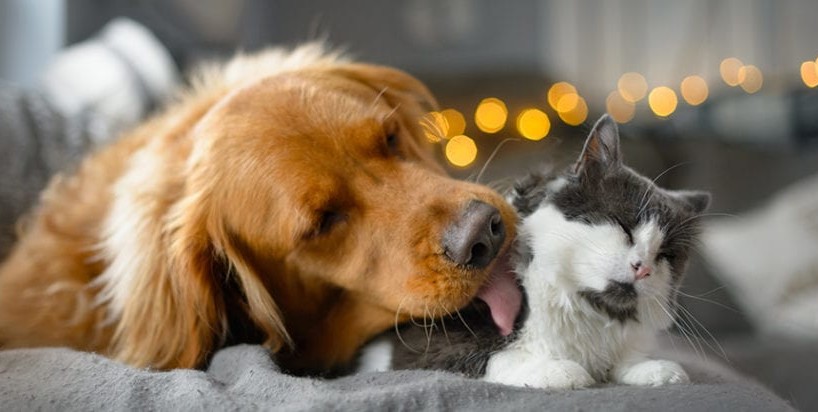
We love our pets. Pets are just as important to most of us as the human members of the family. They have their own personalities and they show us love, support, and loyalty.
Even though we care for our pets like they are human, we have to remember they are not. They have their unique senses. For example, a dog has a sense of smell that is 40 times greater than a human’s.
Essential Oils
The use of essential oils has been proven effective for many human issues. Essential oils are placed in a diffuser and released into the air. They are sometimes rubbed on the skin by mixing them with a carrier oil like coconut oil or olive oil.
Do not assume just because a particular oil is not too strong for you, that it is okay for your pet. A dog has a sense of smell that is 40-times stronger than that of a human.
Essential oils are not just fragrances. The oils used in aromatherapy are highly concentrated oils from plants. When they are smelled, they absorb through the thin sinus membranes. This is how they affect and help the human body.
Alternatively, as more people than ever before are shifting their opinions about cannabis, music therapy, and CBD products for pets, to name a few are becoming increasingly more popular. It’s something that’s been on everyone’s tongues lately, from A-list celebrities to health-conscious consumers, to pet owners. If you are interested in trying these products, Royal CBD was listed as number 1 for dogs, but there are many products out there for your furry friend to try, as well as alternative forms of relaxation, like playing music or piano. For example, if your furry friend is guinea pig, you might wish to check out this post over on DB Tribute about playing music for them, as guinea pigs have a strong sense of hearing and many actually do enjoy listening to soft music.
It takes 250 pounds of peppermint leaves to make one pound of peppermint essential oil. Peppermint is a powerful painkiller. It relieves nausea. Peppermint fights depression and helps people focus. You should never put peppermint oil directly into the mouth. You should uses a diffuser or mix it with a carrier oil and rub it into the skin. Placing the undiluted oil under your tongue or directly on your skin can cause burning. Some people can tolerate pure peppermint oil, but they must be very careful to test the oil before they assume it is safe to use. You can buy aroma diffuser, oil reed difusers, and refill sets at Banyan Tree.
Essential oils and your pets
Your furry friends may not respond to essential oils as you do. Aromatherapy has been used for generations and we can expect our bodies to respond to some degree like others who use it. The same is true for dogs on a much lower scale.
Essential oils have been used on dogs to relieve stress and to calm them for an incredibly long time. Because of those experiences, we can feel safe when using chamomile, lavender, and sweet marjoram to calm our pets. Furthermore, we know that dogs respond well to chamomile when it is used for pain. A dog with sore joints will usually get adequate relief with chamomile (mixed with a carrier oil) when massaged into the skin. Additionally, we know that lavender not only calms dogs, it also works as a sedative. If your dog gets overly excited when going to the vet or when visitors are coming over, lavender will calm him and make him more sleepy. With all of this in mind, if you would like some more advice for canine stress you can find plenty of helpful resources online.
Note: If you use essential oils topically, be careful petting or holding your pet. They may lick you or be overcome by their scent.
Nature
Essential oils may be new to you. They have become part of our quest to be healthy using nature’s bounty. So, we may assume that these products are new to animals as well. This is not exactly true, When an animal is in the wild, their instinct is to find plants that will make them feel better. They know by instinct which plant will treat what is bothering them.
The issue of pets and essential oils is a concern for two reasons. First, the animal is not in the wild. We are giving them the oils that we think will work. Secondly, as we pointed out, essential oils are extremely concentrated. They can burn sensitive skin.
Before you use aromatherapy
Before you use essential oils on your pet, check with your vet. Some breeds have ultra-senses of sight, and of smell. If your dog has allergies, the vet may instruct you to introduce the oil slowly and to use one oil at a time until you are sure of how the dog will react.
Go slowly
When you introduce your pet to essential oil, use it in a diffuser. Begin with 2-3 drops in a diffuser with water. Do this when you are going to be home with the dog so you can watch him. If you have cats, watch them as well. Be sure you place the diffuser in an area where pets cannot reach them. Never leave essential oils where a pet can lick them.
Once you feel the oil is safe to use, you can add it to their bathwater.
Traveling with your pet and portable diffuser
Some dogs love to travel. But just like children, some get overexcited. You can purchase a portable diffuser that connects to your dash USB port. A drop or two of calming oil will allow your dog to rest and enjoy the trip.
Oils that are good for your dog (and cat)
Below you will find a small list of oils that pet owners use. You can also follow Bella & Duke tips to make your furry friends happy! As long as they are not applied directly to the skin, these oils are safe. Of course, a dog could have an allergy to oil that does not affect other dogs. Cats and dogs usually tolerate the same oils. Oils that are bad for dogs are usually bad for cats. However, cats are more sensitive to them and could become ill. All animals are different. Consult your vet if you are concerned or your essential oil supplier.
- Cedarwood
- Good for the skin and coat
- Myrrh
- Often used for dogs with allergies
- Chamomile
- Reduces excitability
- Lavender
- For stress and sedation
- Clary Sage
- Reduces nervousness
- Peppermint & Ginger
- Both of these oils are good for arthritis and hip pain. They also repel insects. This is a good alternative to chemicals that are used to repel fleas and ticks
Oils that are bad for dogs and cats
- Citrus
- This includes lemon, grapefruit, and sweet orange
- Garlic
- Clove
- Birch
- Tea Tree Oil
- Thyme
- Anise
- Wintergreen
- Oregano
- Horseradish
- Some cats adjust well to horseradish and some do not. Dogs should not be exposed to this oil at all. Therefore, it is a good idea to omit this oil from your collection.








